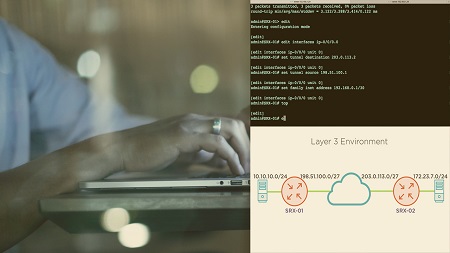
English | MP4 | AVC 1280×720 | AAC 44KHz 2ch | 2h 17m | 400 MB
Do you know the kind of data that transmits across your network? This course will give you the knowledge and tools necessary to build the foundational knowledge needed to be able to capture, read, and interpret packets within your network.
Threats are everywhere within your IT infrastructures. There are many security devices to help detect and prevent these threats, but what happens when you need to dig into the details? What happens when you’re faced with analyzing a threat, conducting a forensic investigation, or troubleshooting an issue? In this course, Getting Started with Packet Analysis, you will learn the basic skills needed to be able to capture, read, and interpret packets within your environments. First, you will learn the structure of datagrams in your environments. Next, you will explore how to use your analysis tools, and how to interpret the information within a datagram. Finally, you will discover how to identify certain risks by looking at datagrams. When you’re finished with this course, you will have the foundational knowledge to be able to hone your skills in interpreting data that crosses your network. Software required: Security Onion with netsniff-ng, tcpdump, and Wireshark.
Table of Contents
Course Overview
1 Course Overview
What Is Packet Analysis
2 Introduction
3 Overview
4 Numbering Systems and Character Encodings
5 IDS IPS and SIEM
6 Summary
Capturing Packets
7 Introduction to Capturing Packets
8 Structure of a Packet
9 Methods of Capture
10 Why Should You Capture Packets
11 Your Capture Programs
12 Demo – Capturing Packets
13 Summary
Reading Packet Captures
14 Introduction
15 Wireshark and Its Outputs
16 tcpdump and Its Outputs
17 netsniff-ng
18 Layer 2 Information and Fields
19 Demo – Analyzing Layer 2
20 Layer 3 Information and Fields
21 Demo – Analyzing Layer 3 and Beyond
22 Summary
IPv6 Packets
23 Introduction to IPv6
24 IPv6 Packet Structure
25 Comparison with IPv4
26 IPv6 in Your Environment
27 Summary
Encrypted Packets
28 What Is Encryption
29 Encryption Types
30 How to Read Encrypted Packets
31 Why Use Encryption
32 Summary
Case Study – Manipulated Packet Information
33 Case Study Introduction
34 What Is a Crafted Packet
35 Demo – netsniff-ng
36 Demo – Wireshark
37 Summary
Wrapping up Packet Analysis
38 Let s Wrap
39 Packet Analysis Guidance
40 Analysis in Your Role
41 Packet Analysis Resources
42 Wrapping up Packet Analysis
Resolve the captcha to access the links!